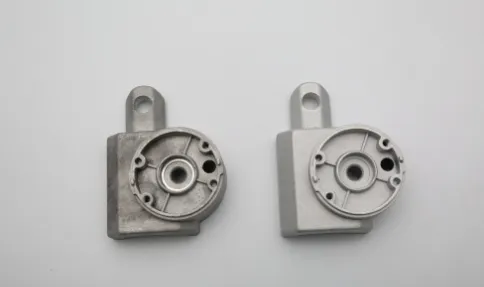ترايبوليفوسفات الصوديوم: لاعب رئيسي في معالجة المعادن وإزالة النفط
تعزيز الكفاءة الإنتاجية في معالجة المعادن
في معالجة المعادن، يعد الحد من كثافة العمالة وتحسين جودة المنتج وتحقيق وفورات في الطاقة من الأمور ذات الأهمية القصوى. وعادةً ما يُستخدم زيت التشحيم لهذه الأغراض، ولكنه غالبًا ما يترك تلوثًا زيتيًا متبقيًا على الأجزاء المعدنية. يعمل ترايبوليفوسفات الصوديوم الصناعي (STPP) كعامل فعال لإزالة الزيوت المعدنية، ويؤدي دورًا حاسمًا في الحفاظ على نظافة الأسطح وتعزيز كفاءة الإنتاج.
الدور المتعدد الأوجه للمواد الخافضة للتوتر السطحي
الحد من توتر السطح وتعزيز الاختراق
يمكن أن تؤدي إضافة المواد الخافضة للتوتر السطحي إلى محاليل التنظيف إلى تقليل التوتر السطحي بشكل كبير، وبالتالي تعزيز تأثير التسلل. وهذا يسمح لمحلول التنظيف بالتغلغل بعمق وفعالية أكبر في الأسطح الملوثة بالزيت.
قدرات استحلاب وتنظيف فائقة
تتميز المواد الخافضة للتوتر السطحي بخصائص استحلاب ممتازة، مما يسمح لها بالتنظيف والتطهير في آن واحد. ويضمن هذا الإجراء المزدوج تنظيف الأسطح المعدنية تمامًا من بقايا الزيوت.
إزالة الزيوت المعدنية بكفاءة في إزالة الزيوت المعدنية
تعمل عوامل إزالة الزيوت المعدنية بسرعة لتنظيف الأسطح المعدنية دون التسبب في التآكل. وتتميز تركيباتها بالبساطة والفعالية من حيث التكلفة وثبات الأداء. تشمل مكونات المواد الخافضة للتوتر السطحي الشائعة ما يلي:
خافضات التوتر السطحي الأنيونية:
- صابون أوليات ثلاثي إيثانولامين الأوليات
- دوديسيل بنزين سلفونات ثنائي ديسيل الصوديوم
- دوديسيل كبريتات الصوديوم
- ستيرات الصوديوم
- بولي أوكسي إيثيلين لوريل سلفات لوريل الصوديوم
- كربوكسيل الكحول الدهني بولي أوكسي إيثيلين إيثر الكربوكسيل
- لوريل جليسيرول فوسفات الغليسيرول إسكسين
المواد الخافضة للتوتر السطحي غير الأيونية:
- يعمل ثلاثي فوسفات الصوديوم، وهو ملح غير عضوي رئيسي، على تعزيز عوامل التنظيف من خلال تحسين قدرة تحمل الماء العسر وتشتيت الدهون المتبقية على الأسطح.
الآلية الفريدة للمواد الخافضة للتوتر السطحي
ويستخدم STPP المجموعات المحبة للماء والمجموعات الجاذبة للزيت في تركيبه الجزيئي لتشكيل واجهة امتزاز بين الزيت والمحلول. تواجه المجموعة المحبة للماء المحلول، بينما تشير المجموعة الجاذبة للزيت نحو التلوث بالزيت. يقلل هذا الترتيب المنظم بشكل كبير من التوتر البيني بين الزيت والسائل.
عند التحريك، تتحلل بقع الزيت وتتفرق إلى حبات زيت صغيرة، وتنفصل عن سطح قطعة العمل. تمنع تأثيرات الاستحلاب والتشتت التي يتميز بها الفاعل بالسطح من اندماج قطرات الزيت وإعادة التصاقها بقطعة العمل، مما يؤدي إلى نتيجة تنظيف ممتازة.
استقرار عالٍ وتطبيقات متعددة الاستخدامات
وتتميز المواد الخافضة للتوتر السطحي غير الأيونية مثل STPP بثباتها العالي ومقاومتها للإلكتروليتات القوية والأحماض والقواعد. وهي تُظهر توافقًا قويًا مع المواد الأخرى الخافضة للتوتر السطحي، وقابلية ذوبان ممتازة في مذيبات مختلفة، ولا تمتص بقوة على الأسطح الصلبة.
تركيبة عوامل إزالة الزيوت المعدنية
تتكون عوامل إزالة الزيوت المعدنية بشكل عام من عامل غسيل وخافض للتوتر السطحي. يمكن تركيبها مع المواد الخافضة للتوتر السطحي المعقدة والمذيبات العضوية ومثبطات التآكل والأملاح غير العضوية وعوامل الإزالة والماء بنسب مناسبة. للحصول على معلومات مفصلة عن استخدام STPP، يوصى باستشارة خدمة عملاء Goway.
الختام
يلعب ترايبوليفوسفات الصوديوم دورًا لا غنى عنه في صناعة معالجة المعادن كعامل فعال لإزالة الزيت. وقدرته على تعزيز كفاءة الإنتاج وتقليل استهلاك الطاقة والحفاظ على معايير الجودة العالية تجعله من الأصول القيمة في معالجة المعادن الحديثة.
الأسئلة الشائعة
س1: ما هو ثلاثي فوسفات الصوديوم المستخدم في معالجة المعادن؟ A1: يستخدم STPP كعامل لإزالة الزيوت المعدنية وتحسين جودة المنتج وتقليل استهلاك الطاقة من خلال تنظيف بقايا الزيوت من الأسطح المعدنية بفعالية.
س2: كيف تساعد المواد الخافضة للتوتر السطحي في عملية التنظيف؟ A2: تقلل المواد الخافضة للتوتر السطحي وتعزز التغلغل وتوفر استحلابًا ممتازًا مما يسمح بتنظيف شامل وتطهير الأسطح المعدنية.
س3: لماذا يعتبر برنامج STPP مستقرًا للغاية؟ A3: STPP غير أيوني في المحلول، مما يجعله مقاومًا للإلكتروليتات القوية والأحماض والقواعد، ومتوافقًا بدرجة كبيرة مع المواد الأخرى الخافضة للتوتر السطحي.
س4: هل يمكن استخدام STPP مع مواد التنظيف الأخرى؟ ج4: نعم، يتمتع STPP بتوافق قوي مع المواد الأخرى الخافضة للتوتر السطحي ويمكن تركيبه مع عوامل مختلفة لإنشاء حلول فعالة لإزالة الزيوت المعدنية.
س5: أين يمكنني العثور على مزيد من المعلومات حول استخدام برنامج STPP؟ ج5: للحصول على معلومات الاستخدام التفصيلية، يمكنك استشارة خدمة عملاء Goway.

